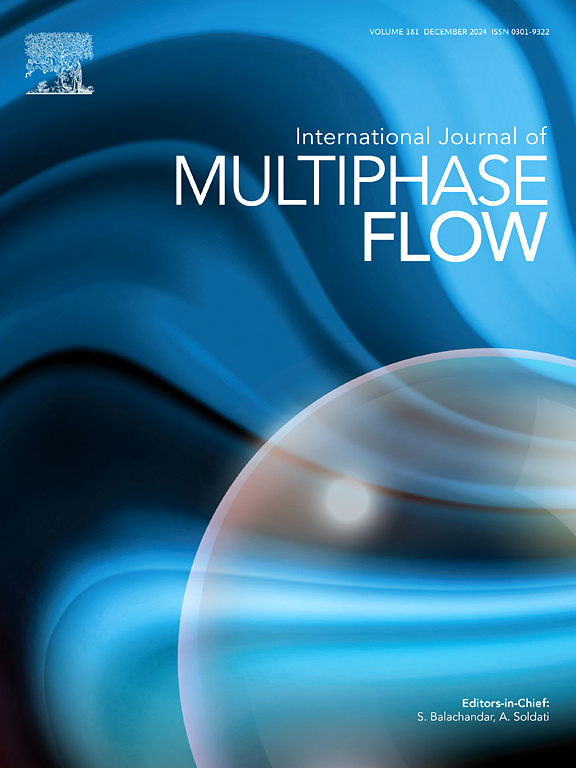Three-dimensional display of foam-driven oil displacement in porous materials
IF 3.6
2区 工程技术
Q1 MECHANICS
International Journal of Multiphase Flow
Pub Date : 2025-03-19
DOI:10.1016/j.ijmultiphaseflow.2025.105221
引用次数: 0
Abstract
This research provides new insights into foam-enhanced oil recovery (EOR) by using advanced X-ray CT imaging to reveal foam displacement mechanisms in porous media. It highlights the superior stability and efficiency of nitrogen foam over CO₂ foam, offering practical guidelines to optimize EOR operations in heterogeneous and gravity-affected reservoirs. Due to its superior mobility control and sweep efficiency compared to other injection methods like gas flooding, water flooding, and other EOR techniques, foam-enhanced oil recovery, or EOR, has been used as an improved recovery method. High-viscosity foam shows significant potential for liquid displacement. Foam's relative immobility in porous media appears to more stable displacement prevent fingers from forming during oil displacement, which results in a more stable displacement. Nevertheless, several factors, including the characteristics of the oil, the permeability of the rock in the reservoir, the chemical and physical makeup of the foam, and others, could potentially affect how effective foam assisted oil displacement is. Furthermore, it is yet unclear how the foam interacts with and moves within the porous environment. Therefore, using a porous media setup with gases, water, surfactant, and foam injection, we examined oil recovery three-dimensional (3D) properties in this work. The patterns of fluid displacement were recorded and examined using a CT scanning scanner. Additionally, the impact of oil viscosity on patterns of foam displacement is investigated. The study offers a quantitative and qualitative experimental visualization of liquid and foam injection, oil recovery with gases, and 3D displacement structures. Consequently, foam injection exhibits good sweeping ability and produces a stable displacement front, as demonstrated by comparing fluid displacement patterns between gases, water, surfactant, and foam. Oil displacement was enhanced by the synergistic action of the surfactant, liquid, and gas components that combine to form foam. On the other hand, investigations with gas flooding and liquid flooding demonstrate trapped oil, gravity segregation, and viscous fingering. The foam that produced the best oil recovery factor displaced steadily across the permeable bed. This work clarified the mechanism of foam movement in porous media. When foam comes into contact with oil and porous medium, it bursts into free-moving liquid and gas particles. As a result, the foam injection experiment revealed two displacement fronts: the continuously flowing gas/liquid layer in front, which moves forward in contact with the oil bank, and the steadily flowing foam bank in the rear. Oil viscosity has no discernible effect on foam displacement because of the foam bank's stable displacement, which also means that there is no difference in the displacement patterns. Although the displaced oil has varying viscosities, the flow regimes remain consistent. A linear link has not been demonstrated between the oil recovery factor and oil viscosity.

求助全文
约1分钟内获得全文
求助全文
来源期刊
CiteScore
7.30
自引率
10.50%
发文量
244
审稿时长
4 months
期刊介绍:
The International Journal of Multiphase Flow publishes analytical, numerical and experimental articles of lasting interest. The scope of the journal includes all aspects of mass, momentum and energy exchange phenomena among different phases such as occur in disperse flows, gas–liquid and liquid–liquid flows, flows in porous media, boiling, granular flows and others.
The journal publishes full papers, brief communications and conference announcements.

 求助内容:
求助内容: 应助结果提醒方式:
应助结果提醒方式:


